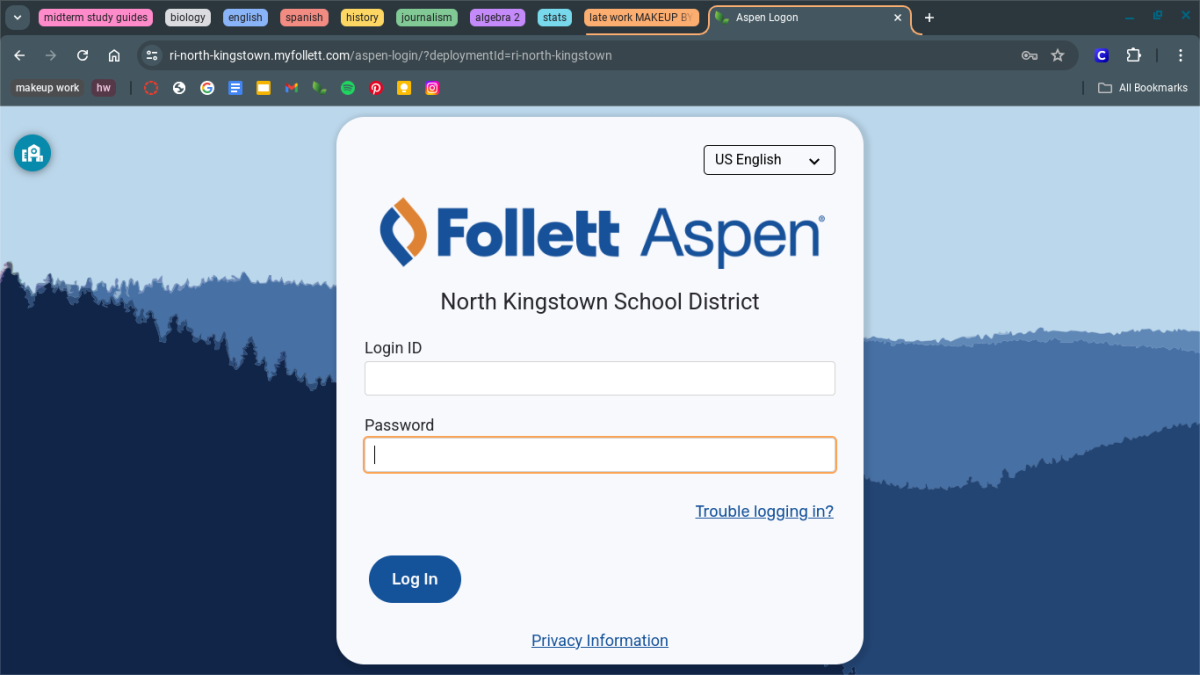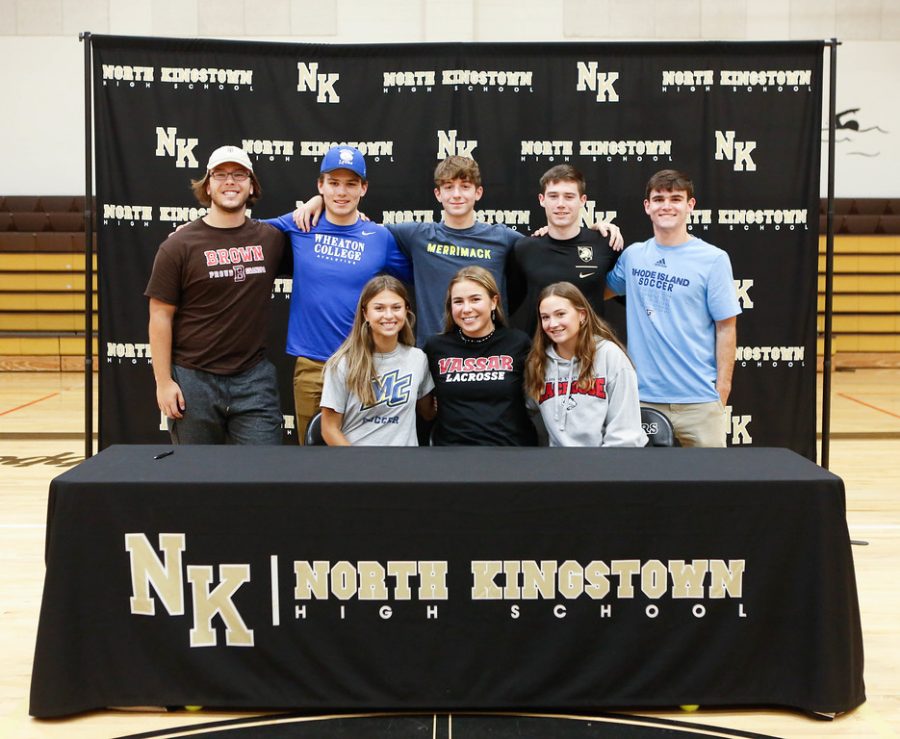LGBT+ students share their stories and struggles at S.A.G.A. meetings
When junior Nicole Caramante came out as bisexual in seventh grade, she became an immediate target of bullying at Davisville Middle School. Caramante, who now identifies as pansexual, recalls being harassed on multiple occasions by a group of eighth grade students, most of whom are now seniors at NKHS.
Although Caramante and most of the other “open” and “closeted” LGBT+ members of NKHS’s Sexuality and Gender Acceptance Club (S.A.G.A.) agree that bullying is not a major issue for them now, they still face a number of social challenges.
For example, one closeted freshman, who wishes to remain anonymous, worries about how other students will react if she openly expresses her identity as a member of the LGBT+ community. “If I come out of the closet, other people will be afraid to be around me,” she said.
Openly LGBT+ students are also subject to frequent microaggressions, which are subtle but offensive comments or actions that often unconsciously or unintentionally reinforce a stereotype. For instance, another student, who openly identifies as gay but likewise requested anonymity, recalls an instance in which a student in his science class loudly called the electromagnetic spectrum “homosexual” on account of its rainbow-like appearance. Subsequently, most of the class proceeded to turn their attention towards that gay student, which made him feel uncomfortable.
In addition, several S.A.G.A. members who do not conform to their assigned genders feel uneasy whenever they use the bathrooms at school. These students, who also requested anonymity, would prefer to use a gender-neutral, private bathroom. One of the students also pointed out that approaching their teachers for the key to a private bathroom would be awkward for them.
At S.A.G.A. meetings, students discuss their challenges, experiences, and all other aspects of life associated with being a member of the LGBT+ community. In an effort to recognize the gender identities of S.A.G.A. members, students regularly share their preferred names and preferred pronouns.
“Regardless of sexual orientation or gender identity, you can expect acceptance at S.A.G.A. meetings,” said Ms. Christina Lawrence, one of the club’s advisers. Along with Lawrence, Ms. Courtney Greer also advises the club. Both Lawrence and Greer teach English at NKHS.
In fact, because the club members wanted to promote inclusiveness and universal acceptance of all LGBT+ students, they voted to adopt the name S.A.G.A back in September. Prior to this year, the club was known as the Gay-Straight Alliance.
As a likely result of the club’s reputation for unconditional acceptance, which its new name reflects, S.A.G.A. has been expanding this year. According to Lawrence, additional students have joined the club at each successive meeting. Greer and Lawrence started out with only a handful of students at the beginning of the year, but had a group of 15 students by the club’s meeting on Dec. 3, including seven freshmen, two sophomores, five juniors, and one senior.
In addition to providing common support for students at its meetings, the club strives to improve tolerance and awareness of LGBT+ students on a school-wide level.
Along with advocating for private bathrooms for transgender students, S.A.G.A. also seeks to increase recognition of LGBT+ students in the school’s curriculum.
“There’s not enough representation for the queer community in classes at school,” another anonymous student said. “In classes such as history and English, only straight people are acknowledged.” Similarly, many S.A.G.A. members believe that the sexual education curriculum in health class does not meet the needs of the LGBT+ population.
“Having a whole education system that is geared towards heterosexual students is not good for LGBT+ students,” said freshman Mike Deus.
Even though the club continues to grow in membership, new students are always welcome. The club meets on the first and third Thursdays of each month in Rm. 310.
“S.A.G.A. meetings are a safe spot,” Caramante said. “We won’t judge one another. Instead, we are here to solve problems.” The club members agree that discussing their personal challenges and experiences with one another improves their well-being and self-esteem.
“It’s important to recognize that talking about your identity can make you feel more confident about yourself,” Deus said.
Terms to Know:
(Based on suggestions from S.A.G.A. members)
Aromantic (adj.):
Not experiencing romantic love or sexual attraction to others
Asexual (adj.):
Having no sexual or romantic feelings and desires
Bisexual (adj.):
Romantically attracted to both men and women
Cisgender (adj.)
Denoting or relating to a person whose self-identity conforms with the gender that corresponds to their biological sex; not transgender
“Closeted” (adj.):
Not public about one’s gender identity or sexual orientation
Demisexual (adj.):
Someone who does not experience romantic attraction unless if they form a strong emotional connection with another person
Gender fluid (adj.):
Having a gender identity that varies over time
Gender identity (n.):
A person’s perception of their own gender
IE: male, female, both, or neither
Heterosexual (adj. / n.):
Romantically attracted to members of the opposite sex; “straight”
Homosexual (adj. / n.):
Romantically attracted to members of one’s own sex; gay or lesbian
LGBT+ (n.):
A collective name for people who identify as lesbian, gay, bisexual, transgender, and / or as any other sexual and gender minorities
Non-binary (adj.):
Having a gender identity that is not exclusively male or female
“Open” (adj.):
Public about one’s gender identity or sexual orientation
Pansexual (adj.):
Not limited in sexual choice with regard to biological sex, gender, or gender identity
Sexuality / sexual orientation (n.):
A person’s sexual identity in relation to the gender to which they are attracted; the fact of being heterosexual, homosexual, bisexual, etc.
Transgender (adj.):
Noting or relating to a person whose gender identity does not correspond or conform to that person’s biological sex assigned at birth
Your donation will support the student journalists of North Kingstown High School. Your contribution will allow us to distribute a print edition of the Current Wave to all students, as well as enter journalism competitions.










